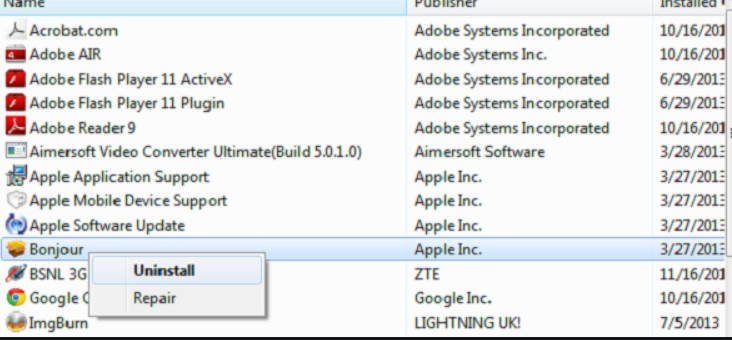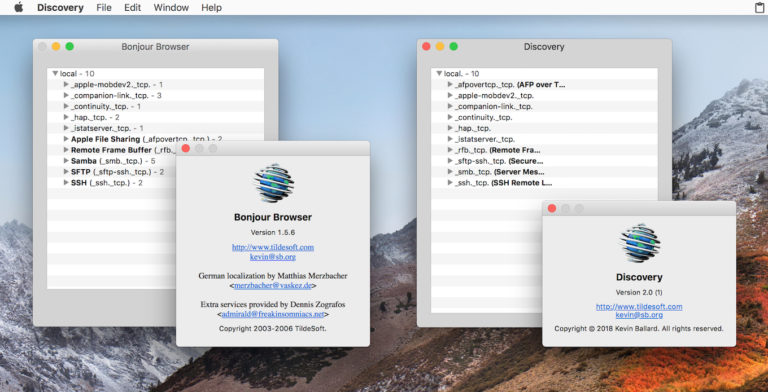
We’ll create a Client and Connection, to handle sending messages, we will start with Connection.

Our second task: do something useful with our system (ie. I changed the names of all my Apple devices. In my opinion Bonjour must be less fragile in updates. An app for musicplaying, Audirvana +, did not connect any longer through Bonjour to the Imac I now found a work around for this problem. Yay! The client’s phone was able to discover the server. Updating my iphones/ ipads to ios 11 meant for me a Bonjour problem in connection to my iMac. The client device shows: browser.stateUpdateHandler ready 07:47:02.461367+0100 MultiConnect browser.browseResultsChangedHandler result: Result(nw: endpoint: server._superapp._tcplocal., interfaces:, metadata: ) 07:47:02.724386+0100 MultiConnect browser.browseResultsChangedHandler result: Result(nw: endpoint: server._superapp._tcplocal., interfaces:, metadata: ) On my server device console shows: listener.stateUpdateHandler waiting(POSIXErrorCode: Network is down) listener.stateUpdateHandler ready Now let’s run the app on two devices, start the server on the first device and tap the “Client” button on the second one. We want to be able to see logs for both server and client (or browser) simultaneously in the Console.app for that we’ll create a global helper function and we’ll stick it in AppDelegate.swift A very rough and incorrect analogy is that AirPrint is to Bonjour, what an Internet Browser is to the Network connection. Bonjour is the protocol that allows devices to discover each other and chat.
#BONJOUR BROWSER IOS PDF#
NSLocalNetworkUsageDescription Why do we use Local Network? Please follow this procedure to setup Seagate Central using an iPad, iPhone, or iPod Touch: Download and install the free Discovery Bonjour Browser app. AirPrint is the full protocol that allows a device to discover a printer and send a PDF over to it which is then printed. Next, we want to use any network available, preferably a local network, and to be able to use the local network on devices running IOS14 we need to add to ist NSLocalNetworkUsageDescription key.

The underscores in the type field are required! NSBonjourServices _superapp._tcp In our case, we’ll define one type and we’ll use TCP protocol. The server does the advertising and handles clients, the browser finds available servers (listeners).įirst of all, we need to add NSBonjourServices key to ist ( ), and pass an array of Bonjour service types. Discovery is a utility that displays all of the Bonjour services available on the local network or on Wide-Area Bonjour domains. To accomplish this task we’ll need a server a browser.

Let’s start with the first task: discovering devices using Bonjour ( ) We’ll also use Bonjour service to let clients discover the each others automatically.
#BONJOUR BROWSER IOS HOW TO#
Today we’ll explore how to send messages between multiple Apple devices using the Network framework, without the need of having external server. So once the data is written to the above File Handle, it's "caught" or read in the following delegate method.IOS/OSX Messaging Using the Network Framework and Bonjour Service (no external server required!).

(I'm trying to consolidate all my methods into one class right now, just until I understand it a bit better.) That writes the data for that NSNumber object to the file handle, correct?īut then, things get even more confusing, when streams enter the picture! The input and output streams for the net service have their delegates pointed to my application delegate as well. Bonjour makes it easy to discover, publish, and resolve network services with a sophisticated, easy-to-use programming interface that is accessible from Cocoa, Ruby, Python, and other languages. [incomingFileHandle number to file handle.") NSData * representationToSend = stringValue] dataUsingEncoding:NSUnicodeStringEncoding] NSFileHandle * incomingFileHandle = objectForKey:NSFileHandleNotificationFileHandleItem] (void)connectionReceived:(NSNotification *)aNotification received")


 0 kommentar(er)
0 kommentar(er)
